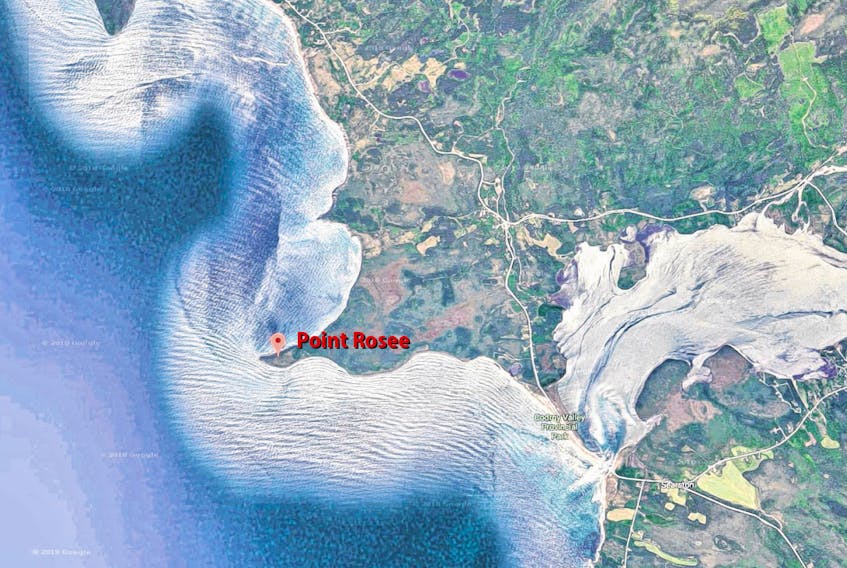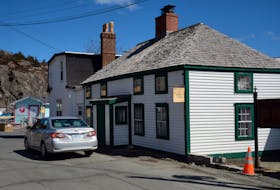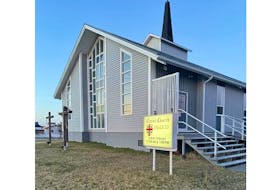Despite all the initial hype and the hope of it being a tourism boon for southwestern Newfoundland, there is no evidence the Norse once occupied Point Rosee.
An archaeological team, led by renowned American archaeologist Sarah Parcak, spent parts of the summers of 2015 and 2016 investigating the small point of land jutting out from the Codroy Valley into the Gulf of St. Lawrence.
Parcak has developed an expertise in using satellite imagery and remote sensing to home in on areas that appear to be of archaeological interest. She has used that method to uncover buried sites in Egypt, Rome and elsewhere.
Related stories:
Archeologist returns to Codroy Valley to hunt for evidence of Viking presence
Update: Archaeologist thinks Codroy Valley may have once been visited by Vikings
Blogger believes recent findings reinforce his own Viking theory
While searching out areas of the North Atlantic to see if she could identify new Norse sites, Point Rosee caught Parcak’s attention in 2014. The grassy headland seemed to have subsurface anomalies that could possibly have been made by human activity a long, long time ago.
The 2015 dig excavated four areas Parcak believed could be the remnants of Norse longhouses and maybe a hearth. Her team did find bog iron, the material smelted by the Norse to make nails at the authenticated L’Anse aux Meadows site discovered on the Newfoundland’s Northern Peninsula in the 1960s.
While nothing was conclusive enough to determine the Norse had been there, the findings were intriguing enough for Parcak to return in 2016 to conduct more fieldwork.
Before she returned for that second year, a documentary in partnership with the BBC titled “Vikings Unearthed” aired on the PBS science show “Nova” and full-length articles about Parcak having possibly found the second Viking site on the island of Newfoundland were published in the New York Times and National Geographic.
The buzz created by the incredible news has proven to be much ado about nothing. Parcak has not applied for any archaeological permits since her work in 2016 and a report submitted to the provincial government indicates no Norse artifacts were found.
“Further testing of bog iron samples for evidence of human agency determined that they were likely natural deposits with no evidence of having been further processed,” reads the executive summary of the report Parcak and her team provided the Provincial Archaeology Office in November 2017.
“Turf features which were posited as anthropogenic have also been reinterpreted as natural.”
The Western Star has asked for interviews with Parcak on several occasions, but none has ever been granted. Links to the television documentary no longer work.
Archaeologist Birgitta Wallace, who has become one of the world’s most prominent Norse scholars since being part of the team that discovered the Norse presence at L’Anse aux Meadows more than 50 years ago, was not at all surprised to hear that Parcak had not found another Norse settlement.
“I’ve been around so many known Viking sites, I was very skeptical from the beginning,” Wallace said in a recent interview after receiving an honorary degree from Grenfell Campus, Memorial University in Corner Brook.
Wallace had met with Parcak in 2015 and was shown samples of the bog iron found at Point Rosee. Wallace didn’t think it looked like the processed bog iron she had seen at L’Anse aux Meadows.
She also felt the location was an unlikely spot for Norse to land because it wasn’t directly accessible from the shore, but rather required a bit of a walk and an approach from inland for the sea-faring culture.
Wallace commended Parcak’s attempt, especially assembling a fantastic team of experts in a wide array of disciplines to give the proposed site a thorough examination for any intimations of having been visited by the Norse.
While Parcak’s work concluded there was no significant human activity at Point Rosee before the year 1800, her report notes there are still some scientific analysis and associated specialist reports pending completion. It also ends by stating the Codroy Valley region still represents high potential for both pre-contact and early historic — including Norse — sites near the coast.
“Cape Anguille and area, for instance, remains virtually unexplored, while possessing many features consistent with Palaeoeskimo sites elsewhere in southwestern Newfoundland,” concludes the report.
Wallace is convinced there are no other major Norse sites south of L’Anse aux Meadows, even though they would most certainly have explored further south than their main base on the tip of the Northern Peninsula.
She said any sites further south would have been little more than short-term summer camps. With around 70, or maybe a little more, people at L'Anse aux Meadows, Wallace said there simply weren’t enough Norse to build anything substantial any place else in North America.
She noted most of the small items found at L’Anse aux Meadows were likely either lost or broken by those who lived there for the brief time they were there. Considering they would not have deliberately left much behind anywhere they went, Wallace is doubtful any other places they did explore will ever be confirmed.
“I think I’m the only person in the world who says I don’t think you should bother looking, except for small temporal sites … I certainly wouldn’t put my money into an expedition,” she said.
In the sagas of the Norse, there is reference to a place called Hop, where a river empties into saltwater in an estuary with sandbars that prevents ships from entering at lower tides.
Wallace has said she believes this is the Miramichi River in New Brunswick, though no proof of Hop’s location has ever been discovered.
Several years ago, there was work being done at a site in the Canadian Arctic that may possibly be a Viking outpost. That work has yet to confirm those findings and L’Anse aux Meadows is still the only recognized Norse site in North America.
The fact the southwestern corner of Newfoundland is no longer being explored as a possible Norse site is disappointing for the province’s tourism industry. The site at L’Anse aux Meadows drew more than 30,000 visitors last year.
It’s also unfortunate news for residents and community organizations in southwestern Newfoundland who may have been hoping to have a new chapter in their history to tell the world.
“We are always hopeful we will find something that will tell us more about our people, our place our history and answers to questions we currently don’t know,” said Tourism, Culture, Industry and Innovation Minister Christopher Mitchelmore. “This doesn’t mean other archaeologists will not continue to look and explore and try to find more information that would lead to another Norse site in the province.”









